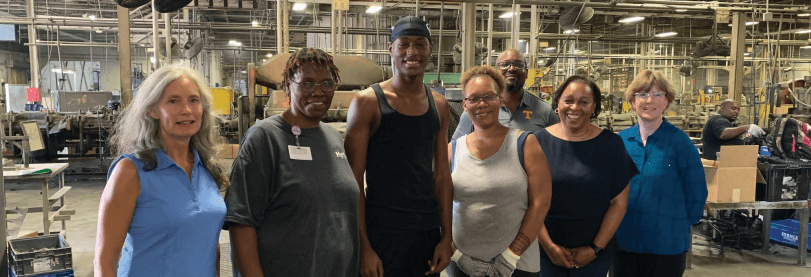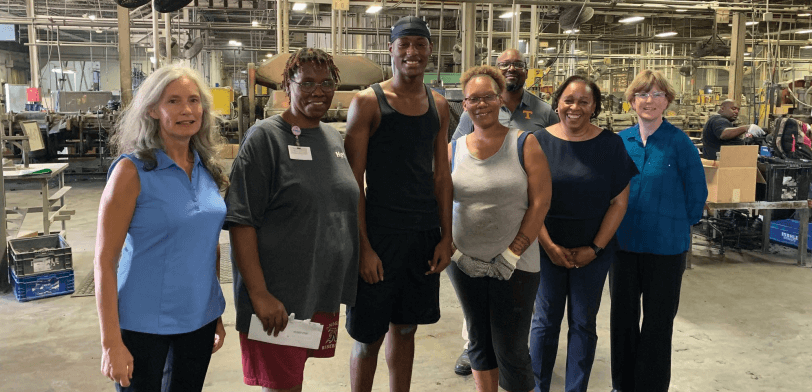
The Mindset Shifts That Attract and Retain Manufacturing Talent
Everywhere you look, there’s real concern about the manufacturing industry struggling to meet demand due to a dwindling workforce. Whether you want to blame the mismatch in workforce skills or the pandemic, one truth remains: it’s hard to find manufacturing talent right now. And it’s even harder to engage and retain top talent.
I’ve been connected to the manufacturing industry in various capacities for 30 years and have witnessed the workforce evolve during that time. Over the past 20 years, I have been connected to and led national public/private partnerships to help small to midsize businesses overcome their staffing challenges.
The number one tip I give manufacturing leaders struggling to make hires? Work on your mindset and put people first.
The Right Mindset Helps Manufacturers Engage Employees
Manufacturing leaders must make two crucial mindset shifts to attract and retain driven, talented people:
1. Drop the negative narrative.
I’ve heard business leaders say that current and upcoming generations are lazy, claiming that they don’t want to work or only want to work remotely—as if working remotely is easy, or is not really working.
This negative thinking is short-sighted and fails to consider the challenging circumstances we’ve all faced over the course of this pandemic.
For many people, working during the pandemic has meant juggling childcare, worrying about elderly or medically fragile family members, and feeling stretched between their personal and professional lives. Even in a remote work environment, the last two years have been anything but easy.
Manufacturing leaders need to forget the narrative that “no one wants to work anymore,” and instead think about the people who work for you now and how upcoming generations want to work.
2. Stop being transactional and move to relational.
It used to be enough if an employee did their job and an employer paid them for it. Today, just as the value exchange between company and customer is more complex so it also is with employer and employee. If you want an optimally productive workforce, you need to consider each of your employees as a whole person.
Employees are human beings, and they expect to be treated as such. Instead of approaching employer/employee relationships as transactional, it’s time to establish interpersonal connections. Manufacturers now have people working alongside robots or cobots, and it would be disastrous to interact with people and cobots the same way. To succeed at work, employees need connection, purpose, and a sense of accomplishment.
Employers should ask themselves: Who are the people in my shop? What are their goals? What motivates them? How can their work support their personal and professional development, as well as give them a sense of contributing to the success of the company?
There are many resources available to help you improve company culture. But none of these tips and tricks will work unless business leaders commit to evolve their attitude and connect with their staff.

Carroll (second from the right) visiting Colonial Diversified Polymer Products, LLC, in Dyersburg, TN.
How to Recruit and Retain Manufacturing Talent
Business owners who understand how to empathize and connect with people on a personal and emotional level are the ones who are going to attract and retain top talent.
While there are many ways to engage with your employees, these two steps are essential:
1. Share your vision.
Competitive business leaders have a vision; they see their goods and services as solutions for their customers. When business leaders share their vision with employees and demonstrate how their quality products solve real problems for people, employees develop more passion for their work. You can motivate your own employees by articulating your organization’s purpose and showing how collectively the work you do provides real solutions for your customers.
2. Connect to individual contributions.
Employees want to know why their role matters and how their work directly benefits customers and contributes positive impacts to the organization. Business leaders can provide the insight to connect an employee’s everyday tasks to the greater good. If your shop is making small parts for a larger product, show employees how critical their work is to make the product a success.
In a 2019 study by the Workforce Strategies Initiative, an Aspen Institute Economic Opportunities Program initiative, researchers found that, “company owners also pointed to gains in performance and workplace morale after introducing greater transparency.” Providing the throughline from an employee’s role to the end result will give them a greater sense of pride in their work and a deeper connection to your company.
Engaging People’s Minds Isn’t Enough—You Must Engage Their Hearts
In 2019, I attended a manufacturing event and sat between two small business owners.
On my right, a safe manufacturer told me about his hiring troubles. He didn’t understand the new generation of workers and couldn’t seem to find talented and trustworthy people to employ.
On my left, the owner of a laser manufacturing company shared that he had a waitlist for applicants. He told me that his employees loved their jobs and often remained with the company for many years.
While speaking with both business owners was fascinating, I soon realized that my role was to help make a connection. I smiled, moved my chair back and let them speak directly to each other.
The safe manufacturer needed to learn what the laser maker had already figured out: engaging with people’s minds isn’t enough to attract and retain top talent—you must engage their hearts.
The laser manufacturer shared his vision with his team and made sure his employees understood the value of their contributions. He asked for suggestions and encouraged his employees to think creatively about providing more solutions for their customers. His staff was motivated and deeply committed to doing excellent work. They would even come early and stay late to ensure their work met critical deadlines and quality requirements.
The safe manufacturer might be the rule and the laser maker the exception, but it doesn’t have to stay that way. If you’ve been struggling to find and hire talented individuals, check your mindset and get honest about your interactions with your people. Seek out a business owner who has evolved their mindset to engage people’s hearts.
As we move forward towards a new normal, ask yourself how you can share your vision with your team: Can you book an all-hands meeting this week, or start having 1:1 conversations about contributions this month? It’s not too late to engage your employees—start small, but start now.
Related Content
Learn practical advice for filling the skills gap with modern technology, attracting top talent, and retaining your existing workforce in this roundtable discussion featuring 3 savvy shop owners.
__
For the past five years, Ms. Carroll A. Thomas has been retired from the National Institute of Standards and Technology (NIST) as Director of the Manufacturing Extension Partnership (MEP). Her role at NIST MEP mainly focused on the MEP National Network™, which helps U.S. manufacturers compete globally by strengthening supply chains and helping them access new technology. With over 400 manufacturing extension offices located in all 50 states and Puerto Rico, MEP services provide measurable enhanced growth, improved productivity, and expanded capacity.


